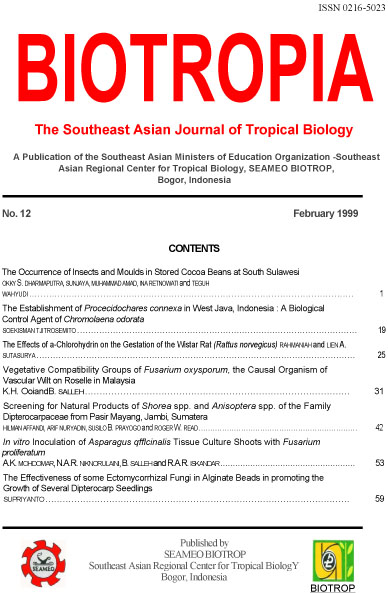
Tags
IN VITRO INOCULATION OF ASPARAGUS OFFICINALIS TISSUE CULTURE SHOOTS WITH FUSARIUM PROLIFERA TUM
Content Language : English

Artificially inoculated asparagus tissue culture plantlets with a virulent fungus, Fusarium
proliferatum showed signs of infection as early as 4 days after inoculation. Macroscopic observations
revealed presence of early symptoms such as necrotic lesions at the affected area and light microscopic
examinations clearly revealed the post-penetration events that took place including the destruction of
surrounding cells. However, little is known of the hyphal activity or advancement on the host's surface at
the initial stage after inoculation. Scanning electron microscopic examination clearly revealed the hyphal
advancement on the surface and the mode of entrance into the host tissues beneath. Four days after
inoculation, the fungi proceeded to spread out from the inoculation point onto the host surface which
eventually developed into a sparse network of both aerial and non-aerial hyphae. Non-aerial hyphae form a
network of mycelium that adheres to the surface and it's movement appeared to be oriented towards the
stomata. Hyphal penetration occurs more often through the stomata, natural openings or wounds. In some
cases, the hyphae crossed over the stomatal opening without entering the host tissues. At places where the
cuticle layer is absent or not well developed the hyphae successfully grew in between the epidermal cells
into the tissues beneath.
Link

This work is licensed under a Creative Commons Attribution-NonCommercial-NoDerivatives 4.0 International License.
